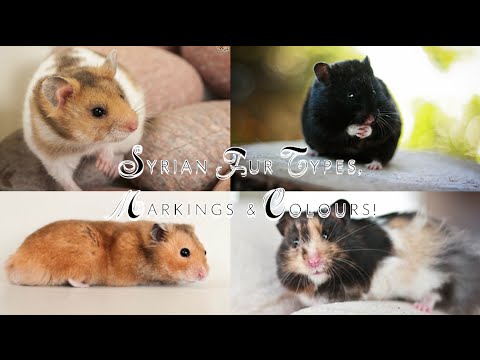Understanding Hamster Coat Varieties
Hamsters are adorable little creatures that come in diverse coat varieties, each with distinct colors, patterns, and textures. Understanding these different coat types is essential for both potential hamster owners and enthusiasts alike. In this comprehensive guide, we’ll explore the various hamster coat varieties, delve into their characteristics, and provide practical tips for selecting and caring for these furry friends.
Popular Hamster Coat Types
Hamsters are known for their pleasant and colorful pelts. The two primary species kept as pets, the Syrian and dwarf hamsters, exhibit a wide range of coat varieties. Some of the most popular hamster coat types include:
Short-Haired Hamsters
Short-haired hamsters, often referred to as “smooth” or “standard,” tend to have dense fur that lies close to the skin. While these hamsters require minimum grooming, it’s vital to regularly check for any signs of skin issues or parasites. Short-haired Syrian hamsters, for example, are quite common and come in various colors, including golden, black, and white. They are easy to maintain and a favorite choice for novice hamster owners.

Long-Haired Hamsters
Long-haired hamsters, notably the Syrian breed, exhibit luxurious, flowing coats that can be quite impressive. Their coats require more frequent grooming to prevent matting and cling to debris, so a gentle brushing 2-3 times a week is essential. Long-haired hamsters can showcase various colors, including sable and cream, adding to their visual appeal. If you choose a long-haired hamster, it’s crucial to prepare for the extra grooming responsibilities.
Patterns and Markings
Aside from hair length, hamsters also sport a plethora of patterns and markings, adding even more diversity to their coat varieties. Let’s explore some popular patterns:
Agouti
The agouti pattern is one of the most recognizable hamster coat types. An agouti hamster typically has a banded coat with darker tips, giving it a striking appearance that mimics a wild hamster. This pattern can be found in several colors, such as grey and brown, making them popular choices amongst pet lovers.
Dominant Spot
Dominant spot hamsters display a mix of color patches against a base coat, generally white. The patterns can vary significantly, from small spots to large blocks of color. The beautiful contrast makes them visually appealing, and they often become standout pets in homes. A dominant spot pattern may appear in varieties of hamsters, especially in the Syrian breed.

Caring for Hamsters with Different Coats
When it comes to hamster care, understanding their coat type is essential, as different coats may require varying levels of attention. Whether it’s grooming, habitat cleanliness, or special health considerations, tailoring care to suit your hamster’s coat variety ensures their well-being.
Grooming Essentials for Long-Haired Hamsters
Providing proper grooming for long-haired hamsters is vital for preventing mats and tangles. Use a soft-bristle brush or a fine-toothed comb to gently untangle any knots. It’s best to do this in a calm environment, as it can be an anxiety-inducing process for some hamsters. Aside from regular brushing, also check for signs of pests and skin issues, as long fur can shelter unwanted guests.
Creating a Comfortable Environment
Regardless of their coat type, all hamsters benefit from a clean, safe habitat. Provide plenty of bedding for burrowing, considering softer options for long-haired varieties to maintain comfort. Additionally, ensure their habitat features enough toys and tunnels to keep them both physically healthy and mentally stimulated.

Conclusion
Understanding the different hamster coat varieties is crucial for prospective owners and those who wish to give them the best care possible. Whether you choose a short-haired, long-haired, or a unique pattern hamster, each will bring joy and companionship. Remember to assess your capabilities regarding grooming and overall care needs before making a choice. The right preparation will ensure a happy and healthy relationship with your furry friend.
FAQ
1. What are the most common hamster coat colors?
The most common hamster coat colors include golden, cream, black, grey, and white. Additionally, various patterns such as agouti and dominant spot add to their appeal. Different breeds can showcase a variety of colors and patterns, enriching the visual experience for potential owners.
2. How often should I groom my long-haired hamster?
Long-haired hamsters necessitate grooming 2-3 times a week to prevent matting and tangles. A gentle brushing and the use of a fine-toothed comb can help maintain their coat and keep it free from debris. Regular checking for skin issues and parasites is also advisable.
3. Are there specific diet recommendations for hamsters based on coat types?
While all hamsters benefit from a balanced diet rich in seeds, vegetables, and occasional protein, those with longer coats may benefit from omega-rich foods like flaxseed to promote coat health. A nutritious diet is essential for both skin and coat vitality.
4. Can hamsters with different coat types live together?
Generally, it’s not advisable to house hamsters of different breeds together, regardless of coat types, due to potential aggression. Syrian hamsters are solitary animals, while dwarf hamsters may tolerate same-sex groups. Always research compatibility before deciding to introduce any two hamsters!
5. How can I tell if my hamster’s coat is healthy?
A **healthy hamster coat** is clean, shiny, and free of mats. Check your hamster regularly for signs of dryness, flaking skin, or excessive oiliness. Regular grooming and a balanced diet support coat health, ensuring your furry friend looks their best.
